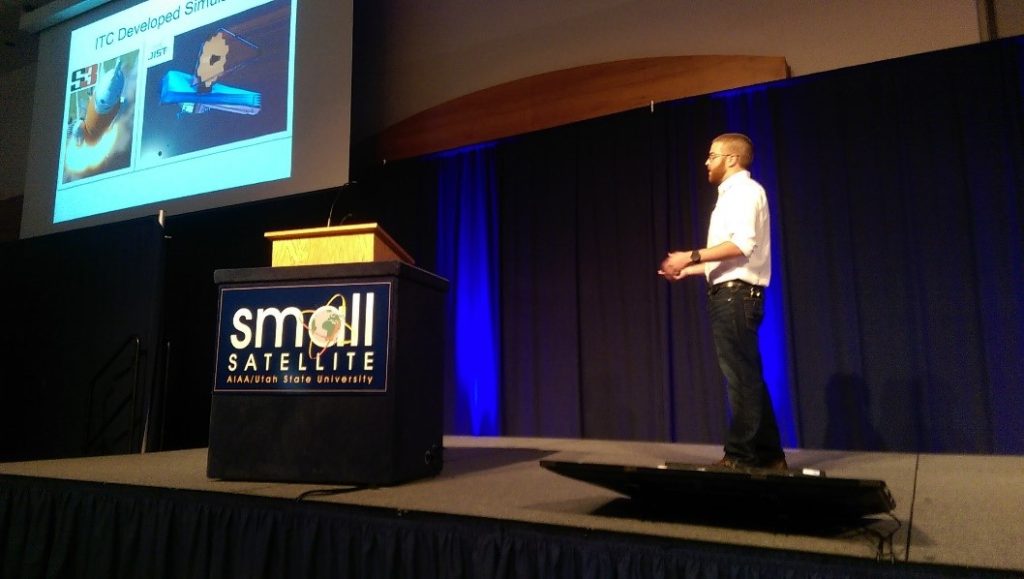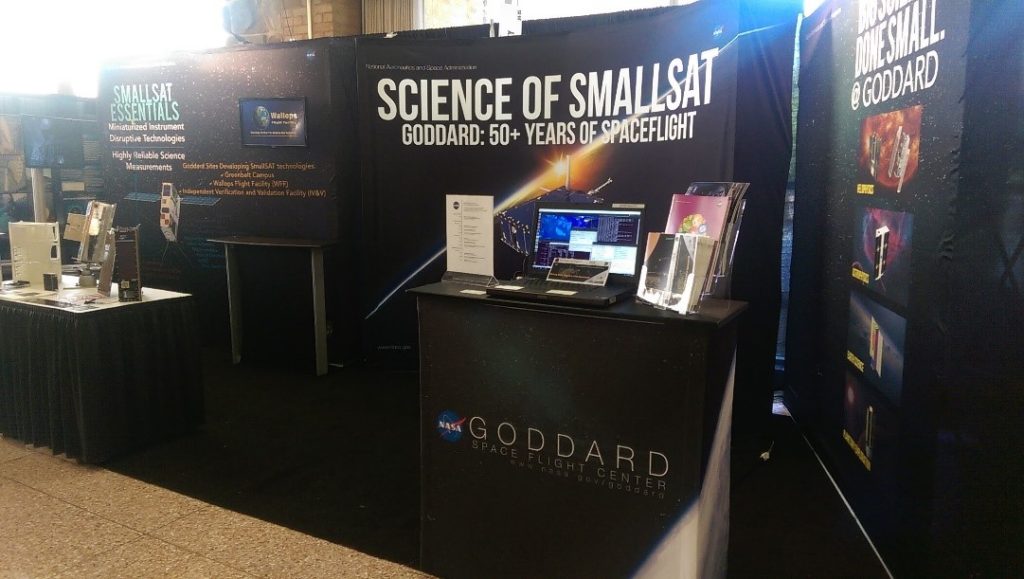Members of the STF-1 team have been visiting Logan, Utah, home of the Space Dynamics Laboratory (SDL) and Utah State University for the small satellite conference. This conference spans a week including a weekend workshop dedicated to CubeSat Developers where Matthew Grubb presented on the NASA Operational Simulator for Small Satellites (NOS3).

NOS3 is an open source platform merging in various GSFC technologies into one package. These include 42, cFS, COSMOS, and NOS Engine. A full presentation can be found on the smallsat.org website for download. Additional presentations on cFS can be found as well. Goddard Space Flight Center also had a booth at the conference presenting on all the current and future planned CubeSat missions such as Dellingr, IceCube, CUTIE, and STF-1. This included 3D printed models and videos showing simulations of the spacecraft and the assembly process.











